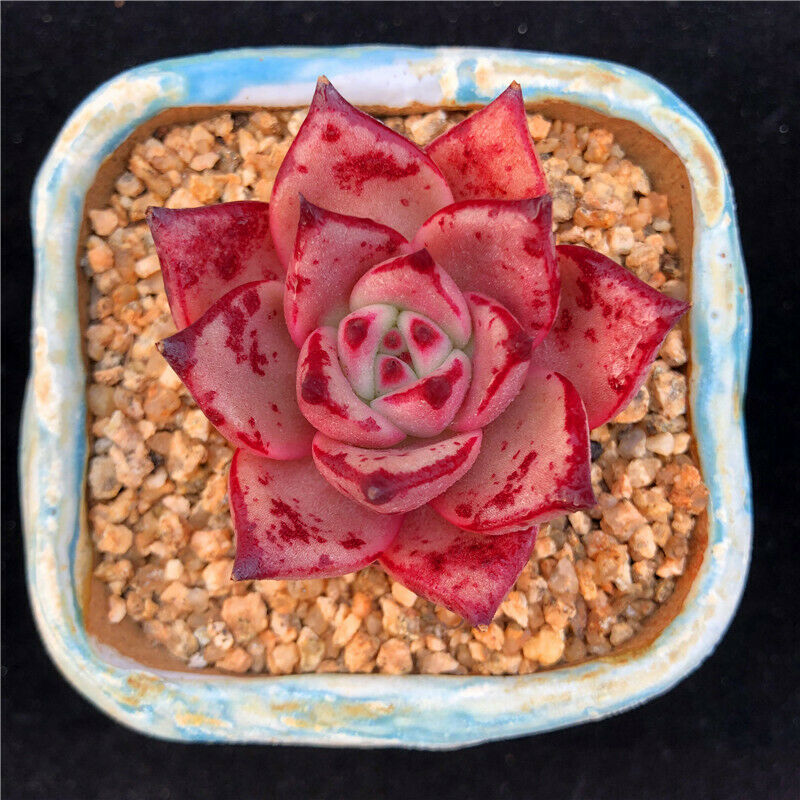First, when caring for the Echeveria Agavoides Kusu, the prepared soil should be clean, loose, and well-draining. It's best to use specialized soil. When using it, you can mix in a little carbendazim into the soil and thoroughly stir it. The amount doesn't need to be too much. Sprinkle a layer on the surface of the soil mix and turn it a few times. The purpose is to prevent residual pathogens and insect eggs in the soil, which could damage the roots of the Echeveria Agavoides Kusu. The soil particle content doesn't need to be too high, with around 50% particles for indoor and humid southern regions. Currently, this gardener's soil mix is composed of 40% particles, which is suitable for both indoor and outdoor conditions.

When cultivating the Echeveria Agavoides Kusu indoors, the pot can be a bit smaller, just one size larger than the crown. This variety doesn't grow very fast, so if you find the pot too small later on, you can always change it. However, for long-term outdoor cultivation, a slightly larger pot is needed to provide more soil capacity, which can withstand occasional high and low temperatures.
Secondly, as a hybrid of Echeveria and Graptopetalum, the Echeveria Agavoides Kusu evidently inherits the weakness of Echeveria in summer heat resistance. To keep the Echeveria Agavoides Kusu alive, shading should be done early in the summer. According to the gardener's observation, when the outdoor temperature reaches 25 degrees Celsius, the Echeveria Agavoides Kusu sunbathing indoors through glass, due to ventilation conditions and the focusing effect of glass, may suffer sunburn. In severe cases, it may even melt. Therefore, for balcony growers, it's best to move them to a place with softer light early to avoid strong sunlight. As long as watering is controlled, the Echeveria Agavoides Kusu can maintain its beauty for a long time.
When caring for the Echeveria Agavoides Kusu outdoors, shading can be slightly delayed until the temperature exceeds 30 degrees Celsius, but do not water them after rainfall followed by sunshine. There is a very high chance of them wilting, and it happens very quickly. The leaves may wilt and fall off in just one or two days, leaving a bare stem.
Finally, when watering the Echeveria Agavoides Kusu, as long as you wait until the potting soil is completely dry before watering, there generally won't be any problems. However, it's important to note that the drought period should not be too long. When the soil in the pot is dry and the bottom leaves begin to soften, it's time to water. Otherwise, the pot might dry out, especially in environments with good sunlight where water consumption is fast. During shaded conditions in summer, there's no need to completely stop watering. Watering should be half of the usual amount. In winter, the temperature should be maintained above 5 degrees Celsius. Although a bit of frost can enhance its color, if the soil is not very dry when the temperature drops, it may melt. Therefore, watering the Echeveria Agavoides Kusu requires careful attention. Fully dry soil before watering is safe. When watering, be sure not to leave excess water on the leaves, and don't let the drought period be too long during outdoor cultivation, also pay attention to temperature changes, especially during seasonal transitions.
In conclusion, most purchased Echeveria Agavoides Kusu are very beautiful, but there is a process of acclimatization after potting, which involves fading and then regaining color. This is normal. Don't try to control water or increase sunlight excessively when you see fading, as it can easily lead to wilting. Generally, it takes 3 to 6 months for the Echeveria Agavoides Kusu to adapt to its environment. After complete acclimatization, its condition also depends on accumulated time, so don't rush it. I will share more detailed maintenance details after I receive the succulents and care for them for a while.